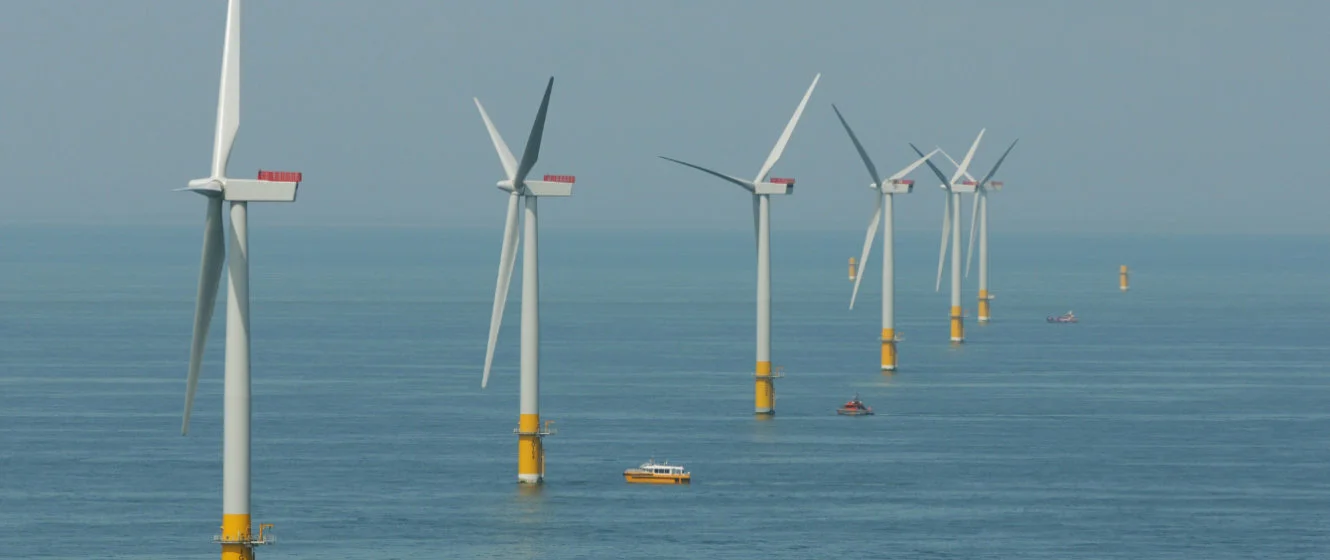The 4th Round of the UK’s Contract for Difference (CfD) scheme, announced in July, has delivered a bumper crop of nearly 11 GW of new renewable energy projects at record low prices. This is more capacity in a single round than awarded in the preceding three put together, according to the government.
The projects are expected to start generating electricity from next year through to 2026/27, depending on the delivery years they bid into. Some smaller solar farms will come online next year, whereas offshore wind farms were awarded later years of 2026/27. Three of the offshore wind farms, totalling 3.848 GW, will be built in phases, with the 2026/27 delivery date reflecting the start of phase 1 of generation.
Offshore wind main winner
Offshore wind was certainly the biggest winner with almost 7 GW of capacity awarded across five large projects.
To put the number in context, the UK has 10.463 GW of offshore wind in operation, 3.193 GW in partial operation and 1.523 GW under construction.
The clearing price for offshore wind projects fell yet again, to a record £37.35/MWh. This was despite recent increases in raw material costs and rising interest rates. For the first time, the price for offshore wind was below that of onshore wind and solar photovoltaics.
888 MW of onshore wind was awarded at £42.47/MWh and 598 MW of onshore wind on remote islands at £46.39/MWh. In addition, 2.2 GW of solar was awarded at £45.99/MWh.
Reflecting the separation of funding into ‘pots’, there was also a broadening of technologies with four tidal stream projects proving successful for a combined 40.82 MW and a floating offshore wind farm with 32 MW.
The latter drew a strike price of £87.30/MWh, coming in cheaper than the offshore wind awards made as recently as 2015 in Round 1 for conventional fixed foundation offshore wind installations. The hope is that floating offshore wind will follow a similar downward cost trajectory to conventional offshore wind, opening up substantial new maritime areas to clean energy generation.
The prices quoted are ‘2012 prices’ and will be adjusted for inflation into today’s money, as well as being inflation-indexed through the life time of the 15-year CfD contracts.
Low-cost energy
CfDs provide security for generators and investors by providing a stable electricity price over 15 years. When wholesale electricity prices are below the clearing price – also known as the strike price – the government tops up the amount. But, if wholesale electricity prices prove higher than the strike price, generators pay back into the scheme.
With current high electricity prices potentially continuing through the 2020s, there is a good chance that the renewable energy projects awarded in Round 4 will pay some money back.
The prices awarded also have to be seen in the context of the current market. They are around a third of current wholesale electricity prices, which have been driven up by concerns over gas supply as a result of Russia’s invasion of Ukraine.
In light of high wholesale electricity prices, current operational CfDs are already paying back to consumers. The Low Carbon Contracts Company recently suggested that renewable generators will return £39,222,407 to electricity suppliers for the final quarter of 2021 and that payments would continue through 2022.
Growth planning
CfDs have proven popular with the renewable energy industry because they provide revenue certainty for generators, which keeps financing costs low.
However, embarking on a pathway to 50 GW of offshore wind by 2030 requires the creation of a much larger supply chain and an extended ecosystem of companies to support the renewable energy sector, creating thousands of high quality jobs in the process.
The UK government has said it will hold its next CfD allocation round in March next year and annually thereafter. To plan effectively, operators need clarity on the timing and frequency of CfD rounds, as well as the level of funding support and the auction design, for example regarding the use of ‘pots’ for particular technologies and their allocated funding levels.
A clear idea of the volume and timing of new capacity likely to be awarded is important both for project developers and supply chain companies as they gear up to deliver on the government’s climate change targets. On its own, European wind association WindEurope estimates that Round 4 will result in 16,000 new jobs in the on and offshore wind sectors.
